CAUTION: The pure yummy-ness of this dish may cause you to dance happily and uncontrollably around the room. Soba is the Japanese name for buckwheat. It usually refers to thin noodles made from buckwheat flour, or a combination of buckwheat and wheat flours. They contrast to thick wheat noodles, called udon. In Japan, the word can refer to any thin noodle. You can learn more about Buckwheat here.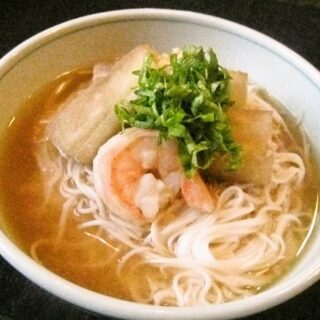
Chilled Soba Noodle Soup
Ingredients
Instructions
Notes
Pre-packaged noodle soups are a kiddie favorite because they're quick and tasty. The downside is that the prepackaged versions aren't exactly healthy with all of that sodium loaded into their spice packets. Using this soba noodle base with the ponzu adds a rich tangy flavor. Using only a bit reduces much of the sodium. It only takes a few minutes to make your own, and it’s fun to serve them in a cup alongside kid friendly chopsticks. You can add different vegetables, shrimp or crab to make this heartier or get a protein bump. So good as an after school snack or a meal.Nutrition Information:
Yield: 4
Serving Size: 1
Amount Per Serving:
Calories: 213Total Fat: 7gSaturated Fat: 1gTrans Fat: 0gUnsaturated Fat: 5gCholesterol: 121mgSodium: 1016mgCarbohydrates: 21gFiber: 2gSugar: 4gProtein: 20g
Tag Archive for: Kitchen coach
How could having Inflammation be good news
Inflammation is the body’s normal response to injuries or infections. The good news about inflammation is that if you are experiencing it, your body is providing you valuable intel of a problem and at the same time, working on a solution. Thats is pretty amazing when you think about it. At the very least, this is your early warning sign of a bigger condition, so act now! Some forms of inflammation can be protective such as a swelling of a sprained ankle to protect the bone. Other forms such as chronic inflammation can be progressive, severe, and play a role in chronic diseases and conditions.
More Good News about Inflammation
If you have been diagnosed with an inflammatory based condition, the other good news, changes to your eating habits may profoundly benefit you.
Many types of inflammation can affect us long-term but we can help to minimize inflammation within the body with our diet.
What to Eat
“”Eat food, not too much, mostly plants.” –Michael Pollan. If we can begin here, in the garden, in the kitchen and at our family table, we are definitely headed in the best direction for health and well-being.
Let’s dive a little deeper
In general, foods that are nutrient dense and contain antioxidants can help reduce inflammation. Anti-inflammatory foods are those that many experts encourage us to eat. They include oodles of fruits and vegetables, whole grains, plant-based proteins, including beans, legumes nuts, fatty fish, and fresh herbs and spices. Now, let’s take a closer look.
Fruits and Veggies: The darker, more vibrant colors the better- Research tells us that vitamin K-rich leafy greens like spinach, lose leaf lettuce, broccoli and kale reduce inflammation. Cabbage, especially in a fermented state (think sauerkraut), is a valuable fighter of inflammation. Additionally, berries and stone fruits contain antioxidant properties, which are substances that prevent or delay some types of cell damage, and can reduce inflammation.
Whole Grains: Oatmeal, brown rice, whole-wheat bread, and other unrefined grains are high in fiber, and that fiber thwarts inflammation.
Beans: They are high in fiber, loaded with antioxidants and other anti-inflammatory substances. Simple as that! Worried about the gassy affects? Try adding a piece of seaweed into the pot while cooking to reduce that gas.
Nuts: Healthy nuts are chock full of the polyunsaturated and monounsaturated fats and do not contain many unhealthy saturated fat. As a result, nuts have major anti-inflammatory effects. Specifically and in small quantities,raw, unsalted almonds, walnuts, pecans, pistachios, brazil nuts, cashews and hazelnuts
Fish: Put it on your plate at least twice a week. Salmon, tuna, and sardines all have plenty of omega-3 fatty acids, which fight inflammation. If you are eating canned tuna, I suggest sticking with Safe Catch Tuna.
Herbs and spices: Numerous studies show the impact herbs and spices have on inflammation. The findings are promising. Add these to your diet- Ginger, Rosemary, marjoram, oregano, sage, cayenne, cinnamon and cloves.
Green Tea: There is no lack of evidence on the positive effects of green tea. My suggestion, look for an organic blend/brand. With so many good choices, this is not the place to cut corners.
Dark Chocolate: This one makes me especially giddy! A study at Louisiana State University found that gut microbes in our stomach ferment chocolate into heart-healthy, anti-inflammatory compounds that shut down genes linked to insulin resistance and inflammation. To bump up the benefits , pair dark chocolate with apple slices to speed up the probiotic fermentation process. This will lead to an even greater reduction in inflammation. Quality is king here- so make certain the cacao is at least 70 percent or above.
The Bottom Line
Have Love and Respect for your body- it is the only one you have in this life. Support your body by putting into it fuel and medicine in the form of good clean food.
 Set up your Kitchen Coaching session Today:
Set up your Kitchen Coaching session Today:
Want to learn more? Drop me a line or give me a call. I am happy to meet with you to discuss your best solutions.
DISCLAIMER–The views and opinions expressed here are based solely on personal experience, research and my interactions other professionals in the field of health and wellness. This article is not a diagnose, or medically based advise. Your experiences and sentiments may differ from my own. If you are suffering from any serious medical condition, you should consult your doctor or naturopath for a diagnosis.
“An herb is the friend of physicians and the praise of cooks.” – Charlemagne
It’s true, fresh herbs not only add flavor and color to dishes, they may also benefit your health. Fresh herbs contain a ton of vitamins and minerals. Basil, parsley, thyme, lavender and rosemary are particularly beneficial. If you know me at all, you understand my need to throw in the fact that organic is best, especially if you are using them frequently.
Fresh herbs are fairly easy to grow in pots, which makes them quickly accessible and much less expensive than the market.
Buyer beware: If you are getting your herbs from the supermarket or even the farmer’s market, please be aware that not all growers are created equal. Be a detective, ask questions and read labels.
Basil
An article in The New York Times recently credited basil as a top-notch source of vitamin K with healthy amounts of iron, calcium and vitamin A. According to the Times, Vitamin K is needed for blood to clot, while iron prevents anemia and calcium promotes strong bones. Vitamin A helps night vision, among things. Fresh basil also has anti-inflammatory properties and its oils may fend off some harmful bacteria.
Parsley
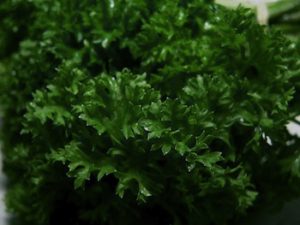 Parsley is loaded with powerful antioxidants that help protect cells from the damage caused by free radicals. In fact, fresh parsley has almost twice the carotenoid content of carrots and the same amount found in kale and red peppers, reports the Christian Broadcasting Network. Parsley is also high in Vitamin K and Vitamin C, another antioxidant that also helps wounds heal and aids immunity. It is also a good source of iron and folate, a B vitamin that is particularly important during pregnancy.
Parsley is loaded with powerful antioxidants that help protect cells from the damage caused by free radicals. In fact, fresh parsley has almost twice the carotenoid content of carrots and the same amount found in kale and red peppers, reports the Christian Broadcasting Network. Parsley is also high in Vitamin K and Vitamin C, another antioxidant that also helps wounds heal and aids immunity. It is also a good source of iron and folate, a B vitamin that is particularly important during pregnancy.
Rosemary
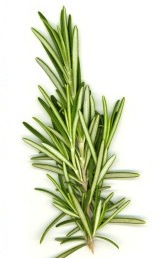 According to the August 23, 2012 issue of Phytotherapy Research, rosemary has been reported to decrease blood sugar levels. Other research that was conducted by scientists at the Sanford-Burnham Medical Research Institute in La Jolla, California suggests the herb may help protect against the oxidative damage associated with macular degeneration. Fresh rosemary may also have cancer-protecting properties and has been shown to help support the immune system.
According to the August 23, 2012 issue of Phytotherapy Research, rosemary has been reported to decrease blood sugar levels. Other research that was conducted by scientists at the Sanford-Burnham Medical Research Institute in La Jolla, California suggests the herb may help protect against the oxidative damage associated with macular degeneration. Fresh rosemary may also have cancer-protecting properties and has been shown to help support the immune system.
Tips
To enjoy the healthful benefits of fresh herbs, University of Nebraska Extension recommends cooking with them. For example, fresh basil is delicious in pesto and rosemary, thyme, and even culinary lavender can be added to chicken, fish, pork and vegetable dishes, as well as soups and grain dishes. Fresh herbs are more flavorful than dried herbs, so use three times as much in recipes and buy them close to the time you plan to use them. If growing your own fresh herbs in a garden, the University of Nebraska says morning is the best time to pick them before the heat of the day sets in. Bump up the taste and your benefit your health by adding fresh herbs to food.
Feel Calmer, Lessen Cramps and Reduce Migraines With Lavender
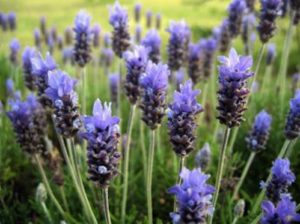 Some of the health benefits of culinary lavender as an herb is in combination with marjoram, orange, and rosemary to add exotic fragrance to savory and sweet foods and at the same time feel calmer from the lavender but stimulated from the rosemary.
Some of the health benefits of culinary lavender as an herb is in combination with marjoram, orange, and rosemary to add exotic fragrance to savory and sweet foods and at the same time feel calmer from the lavender but stimulated from the rosemary.
Health benefits such as possible relief from migraine and menstrual cramps or anxiety combine with culinary fragrances in foods when lavender is used. But use only in tiny amounts.
NOTE: A small study published in the New England Journal of Medicine in 2007 concluded that lavender and tea oils in some shampoos, soaps, and lotions may cause gynecomastia (breast development) in males, according to the article, Lavender Herb – Health Benefits and Precautions.
Boost Brainpower With Rosemary
Here’s a great reason to keep a pot of fragrant rosemary in your kitchen: Recently, scientists at the Brain, Performance and Nutrition Research Centre in the U.K. reported that having higher blood levels of one of this herb’s main chemical compounds—absorbed from its aroma—was linked to the speed and accuracy of study participants’ cognitive performance. The higher the level of the compound in the blood, the better the outcome.
Ginger to the Rescue When the Sniffles Show Up

Did you know that ginger is known to sooth a sore throat and can also zap those nasty flu viruses? In addition, ginger is a natural way to relieve pain and reduce fever.
Soothe Your Colon With Peppermint
Irritable bowel syndrome (IBS) affects up to 20 percent of Canadians and many more women than men. Last year, scientists at the University of Adelaide in Australia showed how peppermint helps to relieve IBS by activating an anti-pain channel in the colon. It reduced pain-sensing fibers, particularly those activated by eating chili and mustard.
Fight Inflammation With Oregano
Research in the Proceedings of the National Academy of Sciences showed that when mice with inflamed paws were treated with oregano’s active ingredient—beta-caryophyllin (E-BCP)—the swelling subsided in 70 percent of cases. E-BCP links to structures in a cell’s membrane, inhibiting the production of substances that signal inflammation.
Get Your Antioxidants From Fresh Thyme
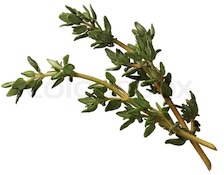 Sprinkle fresh thyme on salmon or chicken that’s headed for the grill: Among fresh herbs, thyme has the second-highest amount of antioxidants (sage has slightly more), according to its oxygen radical absorbance capacity—a measure of a food’s ability to fight off disease-causing free radicals in our body. Thyme is also a very good source of vitamins A and C, as well as iron and dietary fiber.
Sprinkle fresh thyme on salmon or chicken that’s headed for the grill: Among fresh herbs, thyme has the second-highest amount of antioxidants (sage has slightly more), according to its oxygen radical absorbance capacity—a measure of a food’s ability to fight off disease-causing free radicals in our body. Thyme is also a very good source of vitamins A and C, as well as iron and dietary fiber.
I hope after reading this article you will decide to incorporate more fresh herbs into your kitchen and reap the health benefits. Of course, one of the easiest ways to do this is by bringing My Sage Gourmet’s Herbed Seasoning Blends into your kitchen.
I’m here to help.
Book your Kitchen Coaching appointment today!
To your health,

DISCLAIMER– The views expressed here are based solely on personal experience with the products and my interactions with the company’s staff. Your experiences and sentiments may differ from my own.
Kombucha, yes or no? This friends, is a subject of increasing debate. In many cultures Kombucha is known as the “Immortal Health Elixir” Those who drink the proverbial kool-aid believe that kombucha is a precious drink filled with incredible health benefits.
A little History
The exact origination of kombucha, how or where, is unknown. The drink was consumed in east Russia at least as early as 1900, and from there entered Europe. In 1913, kombucha was first mentioned in German literature. At least as early as the mid-1990s it became popular in the US.
What is it?
Let’s begin with the basics. Kombucha is a fermented beverage of black tea and sugar (from various sources including cane sugar, fruit or honey) that’s used as a functional food. It contains a colony of bacteria and yeast that are responsible for initiating the fermentation process once combined with sugar. After being fermented, kombucha becomes carbonated and contains vinegar, b-vitamins, enzymes, probiotics and a high concentration of acid (acetic, gluconic and lactic), which some health experts believe are tied with the following effects:
- Improved Digestion
- Weight Loss
- Increased Energy
- Cleansing and Detoxification
- Immune Support
- Reduced Joint Pain
- Cancer Prevention
The sugar-tea solution is fermented by bacteria and yeast commonly known as a “SCOBY” (symbiotic colony of bacteria and yeast). Although it’s usually made with black tea, kombucha can also be made with green tea too.
More good news: Beneficial Probiotics in Kombucha
An article published in the journal Food Microbiology established that the following probiotics make up this health elixir:
- Gluconacetobacter (>85 percent in most samples)
- Acetobacter (<2 percent)
- Lactobacillus (up to 30 percent in some samples)
- Zygosaccharomyces (>95 percent)
Ultimately, this cocktail of good bacteria interacts together in a unique way to produce some unbelievable health benefits for those who drink it.
Adverse Effects: Yep there some serious potential downsides. I find this accurate in all areas of life-Anything in excess is not good for you. Read more here.
Potential contamination -With all the best intentions I would guess, some folks have missed a beat when doing making their own home brewed kombucha at home, meaning they contaminated their home brew by not properly sterilizing or over fermenting , thereby poisoning themselves when they drank it. Golden rule- Even with Kombucha, it is smells off, toss it out. Its not worth the risk.
If your love for Sugar is akin to a crack habit, kombucha may not be the drink for you. If you know you need at least a 6 step program for your Sugar habit, it would behoove you to skip the kombucha! As mentioned before, anything is excess is not good for you. Kombucha would only add to the candida that could already be having a hell of a dance party in your belly.
Health risks
Due to its microbial sourcing and possible non-sterile packaging, kombucha is not recommended in people with poor immune function, in women who are pregnant or nursing, or in children under 4 years old.
The Bottom Line
After a lot of research and my own experience, the best I can say about kombucha is that it probably won’t kill you and it may work well for you. Personally, I haven’t had any issues with it and it is one of my remedies if I am having consistent digestion issues, or if I’ve been on the rare antibiotic. I will say that apple cider vinegar along with a good probiotic work even better for me. There are no medically documented health benefits, from what I could confirm that prove kombucha to be savior it is sometimes made out to be. Therefore, unless you really like the taste, there’s no clear reason to consume it. If it works for you, you are in good health and have no red health flags then this may be great for you. It bears repeating that health decisions should be based on an evaluation of the risks and benefits. In the case of kombucha, the benefits, other than the subjective, are unsubstantiated. The risks are real, but also it appears very rare.
As for me, I’ll stick with my own favorite fermentations: wheat beer, sauerkraut, yogurt, chocolate (oh yes it is fermented) and cheese. This along with an occasional bottle of a high quality kombucha and I’ll pass on the homebrewed for sure.
Reports of adverse effects related to kombucha consumption are rare. It is unclear whether this is because adverse effects are rare, or just underreported. The American Cancer Society says that “Serious side effects and occasional deaths have been associated with drinking Kombucha tea
My faves
Resources You Might Enjoy
COOKED by Michael Pollan – A great read that I reference frequently
Prefer to watch? You can view COOKED here
Microbial Foods.org on The effects of red pepper seasoning on Kimchi
Microbial Foods.org on Diversity of Kombucha
I hope you will take a few moments to dive deeper into the practice of eating fermented foods for good health.
to your health, 
DISCLAIMER–As a food and fitness blogger, I often receive free samples to review but I am never paid for my opinions. The views expressed here are based solely on personal experience with the products and my interactions with the company’s staff. Your experiences and sentiments may differ from my own
Savvy Deals just got Hotter at My Sage Gourmet
WE’RE FRESHLY STOCKED WITH WINTER DELIGHTS
20% off all Organic Artisan Products
and Private Cooking Classes!
PLUS FREE SHIPPING!
Limited time offer ends December 10
Use coupon code: shopsavvy at checkout
MY SAGE GOURMET PRODUCTS AND CLASSES MAKE GREAT GIFTS
FOR MOMS, DADS, BRIDES AND SOON-TO-BE MOMS


